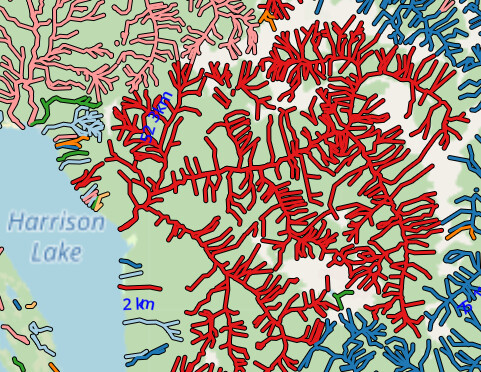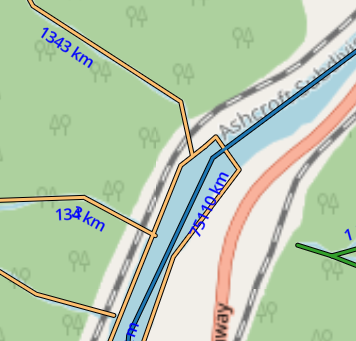I’ve added a new view, which includes waterway and natural=water.
Any OSM ways, which have a waterway key, or natural=water, and share a node, will now be joined. The total length of the water systems is much less accurate now, but it means that rivers which are connected to the edge of a lake, or river area, will be connected together.
OSMers have various views on whether we should map rivers (or streams) through waterbodies (e.g. this thread). One reason for mapping through a water body is to make hydrological analysis easier, such as on WaterwayMap.org, but people (incl. me) are unsure when to map through a waterbody. My hope with this analysis is to support both mapping approach, and not force one.
Alas, many non-trivial lakes are mapped as multipolygon relations , and this code only looks at ways. ![]()
e.g. the big red Cogburn Creek in CA-BC area is correctly joined when when combining natural=water or waterway=*

wheras with just waterway=* all the tributaries connected to the riverbank are not connected to each other.

However they aren’t connected to the mulitpolygon relation for Harrison Lake).
You can see still find mapping mistakes. Here the Thompson River isn’t connected to the natural=water river bank. (which should be mapped).

I’ll keep this view for now, although it is a little hefty to generate. Supporting relations is low on my priorities for now.
Happy Mapping. ![]()
![]()